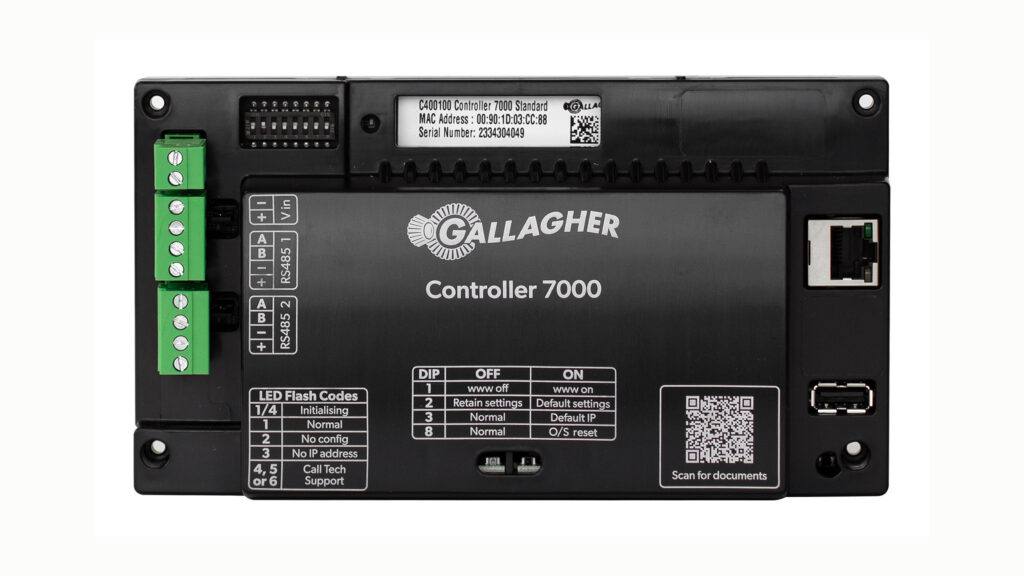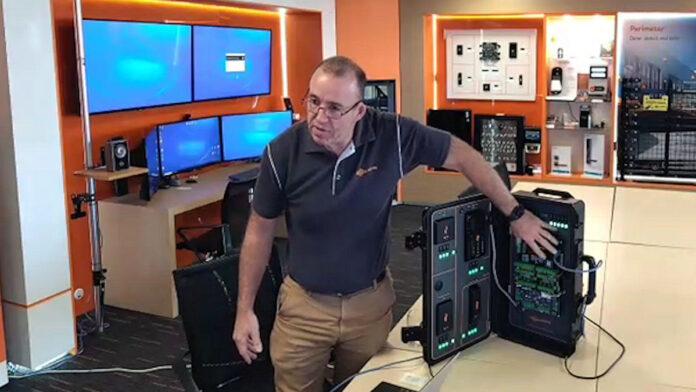Gallagher Controller 7000 Review Examines Features, Hardware Upgrade Process.
Gallagher Controller 7000 review – SEN got its first look at the Gallagher Controller 7000 (C7000) hardware at Integrate and Security Expo recently, and we took a closer look at the powerful C7000 and its process of upgrade from Controller 6000 to Controller 7000 in a demo with Gallagher’s senior technical account manager, Dean Matheson.
Gallagher’s new C7000 controller, supported by Command Centre V9, has been released just in time for Security & Government Expo in Canberra on November 16, and a capable piece of work it is, too.
This is an important release from the Gallagher team. Distributed access controllers form the beating heart of an electronic security system, gathering data from alarm sensors, locks, readers, lifts, turnstiles, perimeter fences and more, as well as managing local events via onboard user and event databases in the event of server or comms failure.
Solid state controllers like this are robust and very long lived. Gallagher’s Controller 6000 was launched way back in 2009 – eons ago technologically speaking – yet it continues to deliver strong and reliable service and will be supported until July 2031. The new Controller 7000 (C7000) is designed to offer the same longevity, but with enhanced memory, processing and cybersecurity.
Gallagher Controller 7000 Review Features
Before we go deeper it’s worth taking a quick look at the key features of this new C7000. These include support for 10 doors with multiple readers per door, handles intruder alarm monitoring and transmission of 256 alarm zones, has IP and high-speed RS-485 connectivity, as well as software updates to field devices, has programmable controller-based logic that operates independently of the server and features authentication and encryption between the C7000 and all Gallagher elements of the system.
The system offers elevator access control, support for integrated perimeter security, can integrate directly with building management solutions, supports multiple wiring topologies, features native programming interface for integration between the controller and 3rd party systems, and has peer-to-peer inter-controller monitoring.
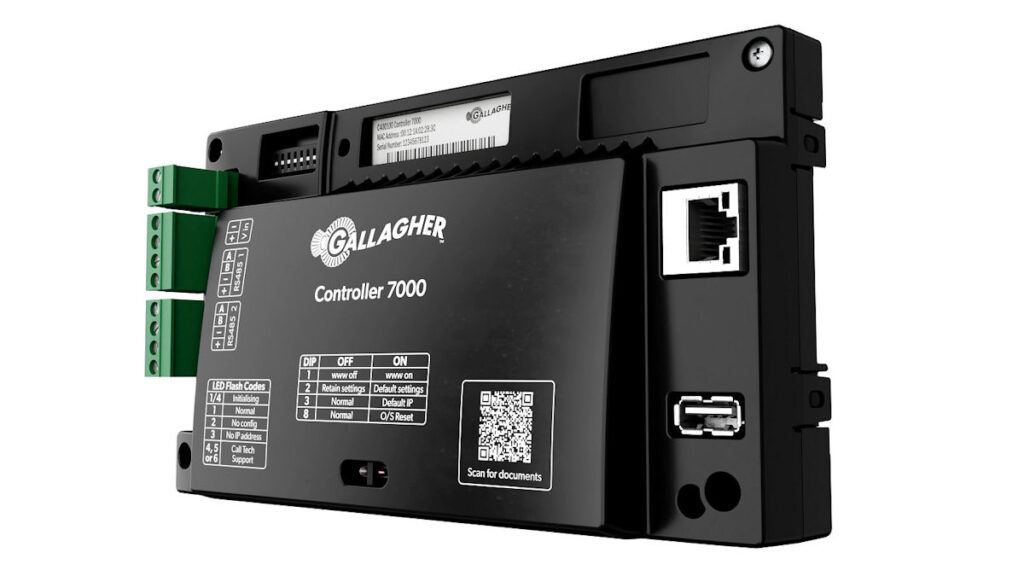
The C7000 supports unlimited access zones, 2000 access groups, 400 time schedules, 2,000,000 credentials and 1,000,000 events. But it’s the underlying capabilities of the new hardware that are most noteworthy.
Central to the nature of this controller is the ability to support channel partners and their customers far into the future, taking on whatever features and functions that future throws its way – that means plenty of processing, plenty of RAM and serious cybersecurity functionality.
According to Matheson, the development of the C7000 dates back before COVID and there’s a deep connection to the Controller 7000 Single Door (C7000 SD) released in early 2023.
“When we went to the 7000-family, beginning with the C7000 SD, we had to develop a whole new way of loading and storing keys that involved building a new trusted environment in the factory to house those secure processes,” Matheson explains.
“Secure keys governing operation are now embedded inside the machine, so they can’t be tampered with and there was a significant amount of work required to implement this at the manufacturing level for the C7000 SD that has transferred directly across to the new C7000.”
Gallagher Controller 7000 Review Industry Input
According to Matheson, lashings of work goes into designing and manufacturing any new controller and a lot of this work is undertaken in partnership with channel partners and end users whose feedback partly directs the nature and capabilities of any new product. With the C7000, that feedback impacted on form factor, which could have been considerably smaller.
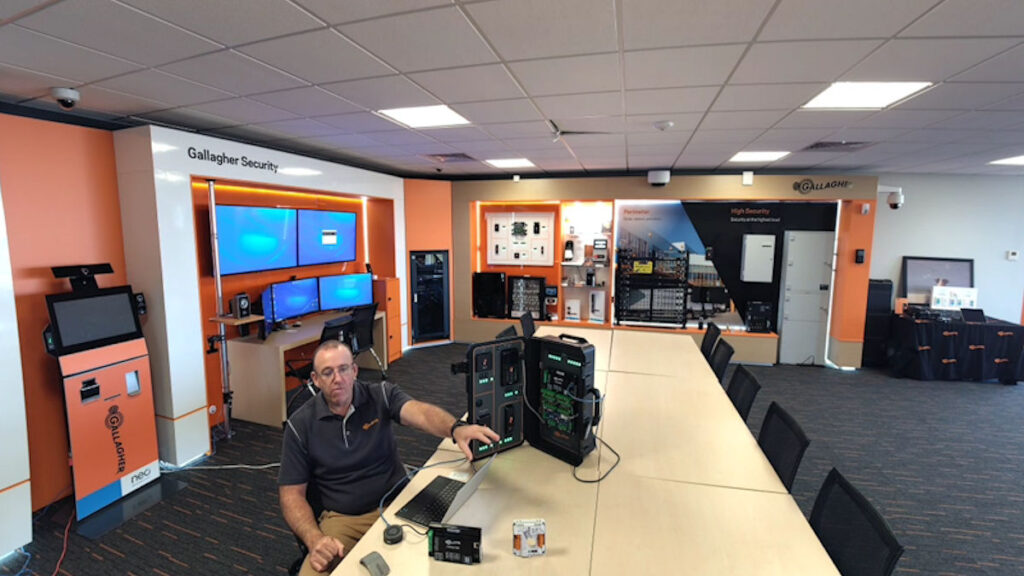
“The Gallagher team spent a lot of time prior to physical development doing research to find out what our partners and end users wanted from the new C7000,” Matheson explains.
“The feedback from the channel was that the new controller had to be installed in the same footprint with all the same cabling as the existing 6000 controller to minimise upgrade work. We really took this onboard and none of the peripherals have changed at all – the hardware and placement of connections is nearly identical – just superfast and highly cybersecure.”
Matheson said the team started out beta testing internally, then externally in real world applications.
“It’s one thing to manufacture a product but you need to know that it’s easy to install and commission and that the end user experience is seamless – our testing allowed us to assess this,” he explains.
According to Matheson, the real changes with the C7000 are on the inside, with the faster processors, increased RAM and significantly enhanced cybersecurity. These enhancements mean the system can do much more, much faster.
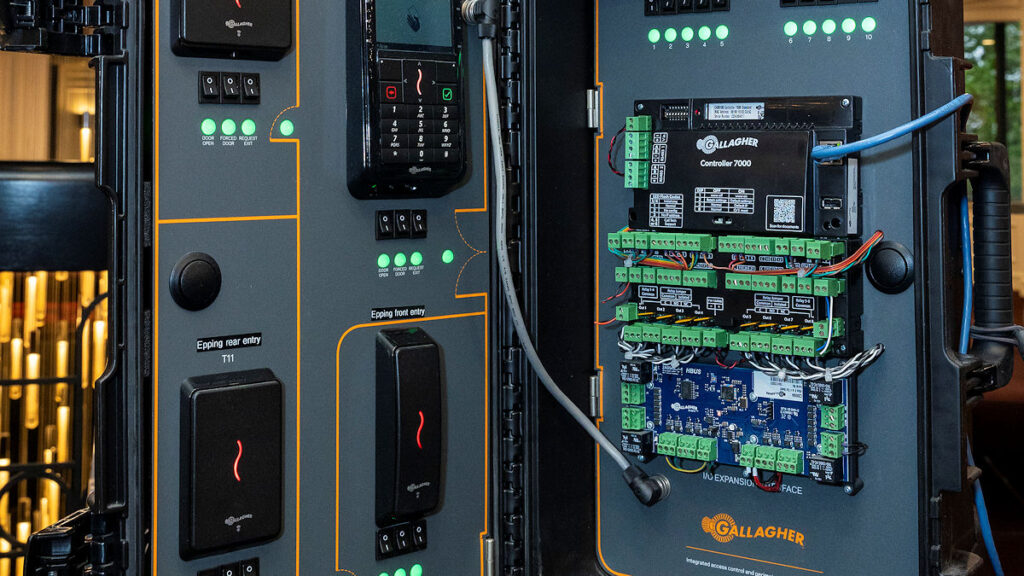
“This new controller is 10x faster than the old one, has 8x more RAM and 2 operating systems – a secure operating system and an application operating system,” he explains.
“Secure Edge Lock booting means that every time a controller boots up, it checks that the operating system hasn’t been rolled back or tampered with in any way. And it checks that someone hasn’t tried to backport an old version of the OS.
“It also means that every time a customer gets a C7000 connected to the network, they know that it’s a genuine Gallagher controller with an individual ID applied in a secure environment that hasn’t been cloned, and that it has factory software installed straight out of the box.
“The focus on hardening the cybersecurity profile is about meeting the next level of cyber threats that our customers will face in the years ahead and ensures we will not face vulnerability problems moving forward.”
Gallagher Controller 7000 Review Performance
As Matheson explains, the C7000 is quick – not only when it comes to read times at the door, but with firmware and controller upgrades as well.
“With the HBUS reader and the Controller 6000, it used to take 200 milliseconds to get a decision out from the controller and register it back to the door but that turnaround around is now just 8 milliseconds – it’s really fast,” he says.
“The additional power also means we can do a lot more processing on board – not just more doors, 256 alarm inputs and automation outputs, as well as support for a wider range of readers and many more features going forward.”
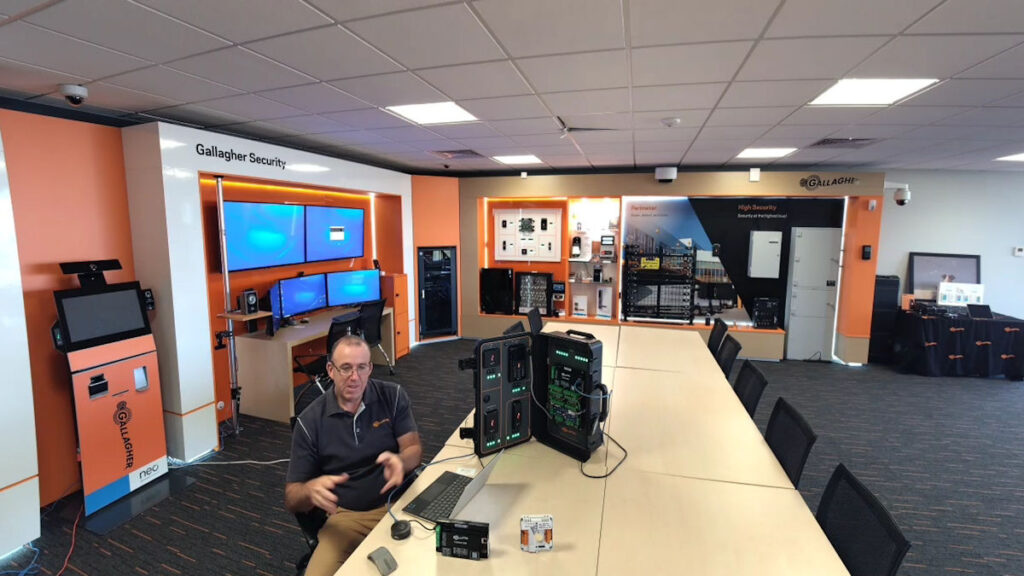
According to Matheson, another benefit of faster processing and greater storage is the ability to support larger databases at the edge, and to upgrade controllers much faster – the time it takes for a C7000 to download new firmware and restart is super quick.
“With the demo system we’re using today, it took about 53 seconds to upgrade – a system with 100,000 users will take longer but it will still only be a few minutes.
“With the extra RAM and processing we’re also able to deliver 1 million events offline and 2 million users, with the ability to continue to support those numbers even if there’s an upgrade to new credential technology, such as NFC or biometrics.”
And the enhanced performance also means support for new features – some of which are already in train, others which have not yet been conceived.
“When it comes to new things, 802.1x network authentication is one of the first features we’re going to add in – that will really enhance security for networks,” Matheson explains.
“For our enterprise customers who want to go to the next level with network security and don’t want to rely on IP addresses, that is going to be very appealing.”
Gallagher Controller 7000 Review Upgrade & Programming
A key element of C7000 development has been to make the upgrade process quick and easy without requiring new skills or training. Importantly, Matheson says that if you can program a C6000, you can upgrade to and program a C7000.
“Something we took from the initial feedback was to simplify the programming of the system upgrade and to automate it in software,” Matheson explains. “What that means is upgrading from a 6000 to a 7000 is very straightforward – just to show the process, let’s go through it now with the demo unit.
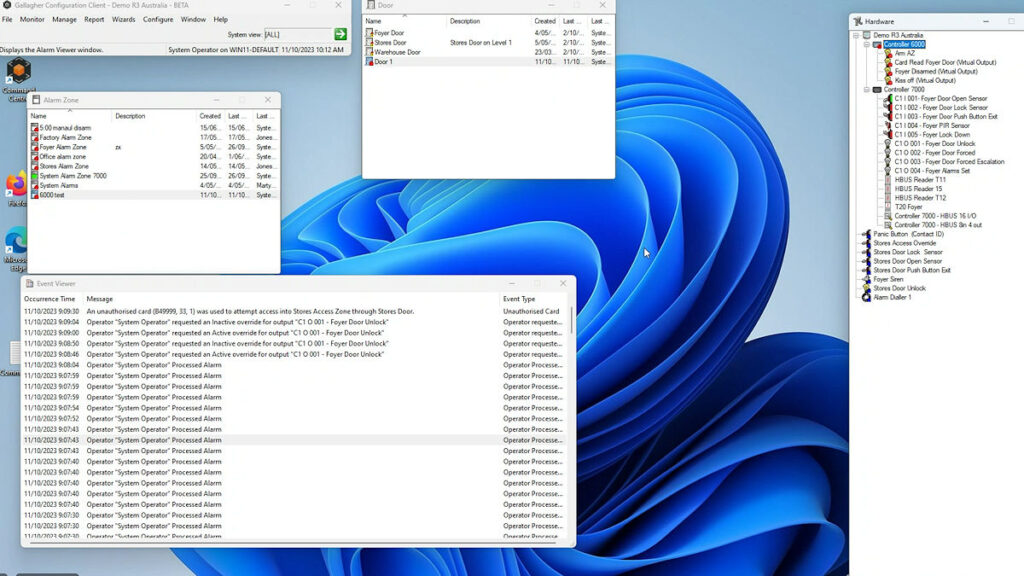
“You bring the C7000 online with Command Centre v9 – we need to give the controller a name – let’s just call it ‘Upgrade’ – obviously in the field techs will have a naming schedule.
“As part of the process, you nominate ‘upgrade to 7000’ and now I’m going to click ‘apply’ – what you’ll see up in the hardware tree is the original Controller 6000 – the outputs and IP addresses have been moved across to the 7000.
“All I’ve got to do now is to put in a serial number for the C7000 and add the MAC address, and the new controller is ready to come online. The process took less than a minute in my case – for a larger site it might take a few minutes,” he explains.
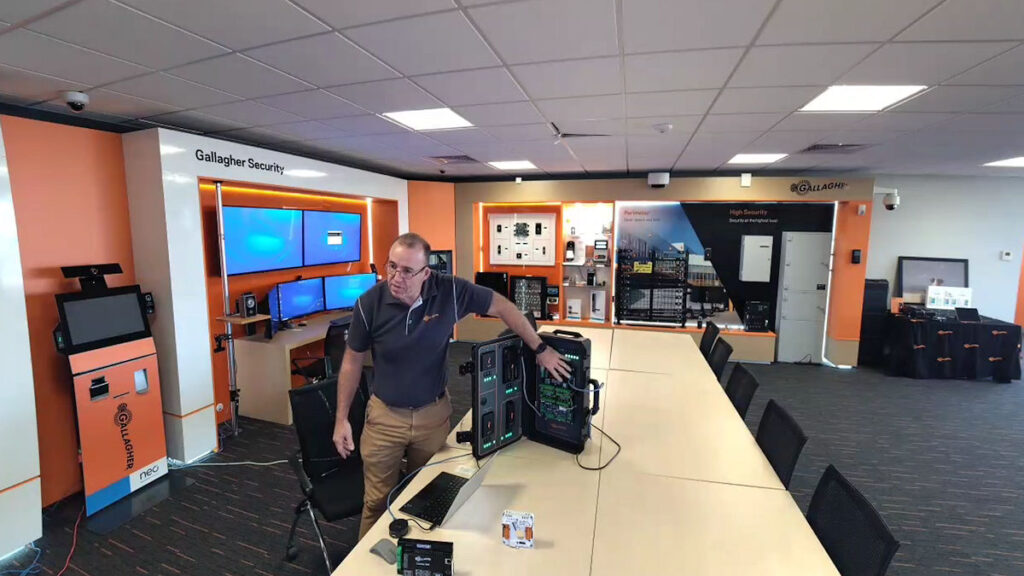
“Things like inputs, outputs, alarm zones or areas linked to the old 6000 are moved across and linked to the C7000. There may be some aspects of programming that techs undertake manually if the application is more complex, but otherwise they just load a new controller’s IP address into software, bring it online and start recommissioning and undertaking test procedures.”
Matheson says the physical aspects of the upgrade are very simple.
“As an example, when I upgraded the demo panel, I removed the cabling, physically swapped the old 6000 for the new 7000, screwed the controller into the demo board and plugged the wires back in – that was it,” he explains.
“I then added the controller’s IP address in v9 software – in my case, I did the programming manually on purpose to get an understanding of it, but a tech in the field would just move everything related to the old controller over to the new controller in V9, and immediately start checking and commissioning.

As Matheson explains, when it comes to programming, that’s been simplified as well.
“The process is just so quick and there’s very low controller downtime – once the tech is happy, they will move on to the next controller – in some applications there will be a cabinet containing many controllers, so the easier the process is, the happier techs and their customers are going to be.
“There are also some neat new features, like the voltage monitoring and power supply management, which will make the upgrade and recommissioning process even quicker,” Matheson says.
“Techs will be able to see the status of components very quickly and make sure everything is online and all data has been copied across.”
According to Matheson, if the controller is installed in a DHCP environment, then it’s just a matter of plugging in a new controller, the V9 finds it and away the installer goes with upgrade and commissioning.
Gallagher Controller 7000 Review Development
The development process of the C7000 and the development of the C7000 SD are closely linked, and both were pushed back by the COVID pandemic, which demanded the Gallagher development team work full time to ensure supply of key products to users as components became increasingly scarce.
According to Matheson, substantial work had been done on the C7000 SD prior to the outbreak of the pandemic. Once COVID was over the team needed to pick up where they had left off, bringing with them lessons around the importance of component supply.
This COVID delay – and the need to refamiliarise with the project and apply valuable lessons pandemic taught – in turn pushed back the development of the C7000, but not as much as the team expected.
“The COVID issue around components did impact on the C7000 SD development because we had to make changes to our card readers – chips for its NXP processors became hard to get,” Matheson says.
“Ultimately, we chose to pay higher prices for key components which we did not want to compromise on when it came to performance and reliability, but with COVID over, we looked around for chipsets that offered a balance of reliability, performance, and longevity.
“We wanted to ensure that 7000 family components will continue to be available far into the future – that’s very important for a controller with a 15 or 20-year working life.”
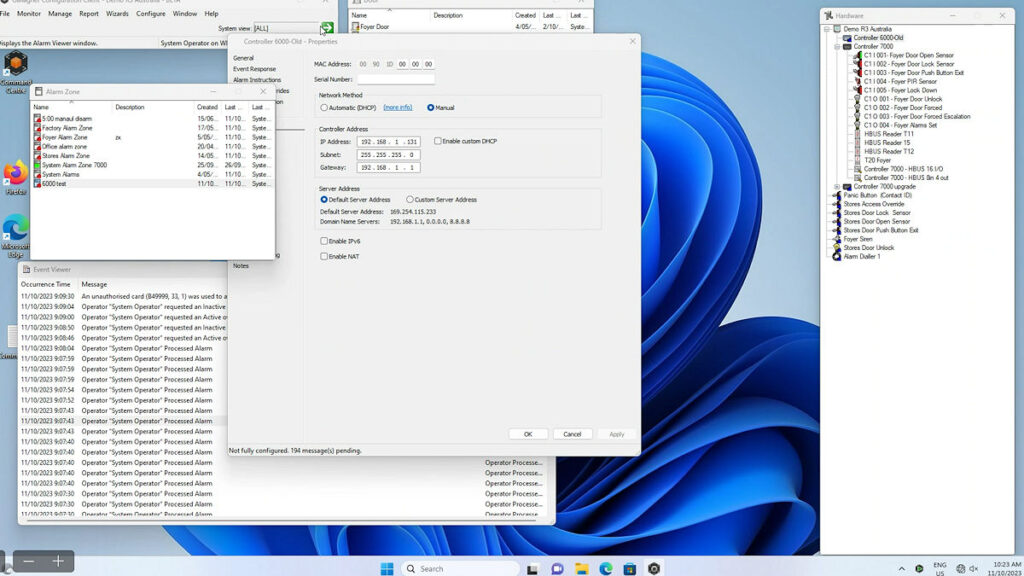
In terms of development time, Matheson says the serious work revolved around creation of Gallagher’s Trusted Zone for controller secure key programming, as well as development of related procedures. Given this facility was built during the development of the C7000 SD, the process of applying secure keys to the C7000 was made considerably easier.
“We released the C7000 SD in early 2023, and we are releasing the C7000 at the end of the same year,” Matheson says. “It’s really a testament to the work done with the C7000 SD that the C7000 has been developed so quickly – so much has been transferable that it has made the C7000 development process much quicker than any of us anticipated.”
According to Matheson, when it comes to speed of new product development Gallagher benefits from being a manufacturer, as well as a designer of hardware and a developer of software.
“We’re lucky that we design and manufacture inhouse – we’re not having to design something and send it off to a manufacturer,” he explains. “This makes the process faster; means we learn as we go and at the end there’s great reward in seeing new products come out of our factory that our customers have had an important say in developing.”
Gallagher Controller 7000 Review Conclusion
A controller this capable begs the questions as to whether the Gallagher team already has next-gen functionalities in mind, including support for cloud applications and data analytics.
“There’s a big development wish list the team is working through, including advanced levels of network authentication,” Matheson explains. “There’s a lot of things that are going to happen out in the world in the medium term – for instance, not everything can or should be server-based. And 10 years ago, who knew we were going to be opening access control systems with mobile phones?
“Developments like analytics at the edge, whether that’s new API’s direct to the controller giving higher levels of authentication very quickly regardless of whether the authentication device is a camera, biometric, mobile device or credential, these and many more are on the table,” he explains.
“We do see there may be a move away from servers to a cloud-based environment and that demands more capable and more secure local controllers. Feeding into that is the fact that in Australia network performance is variable – some locations have regular outages. In such moments you need a system that can make decisions in the field while offering the end user a consistent experience.”

With SAGE opening in Canberra tomorrow, is there anything enterprise end users should be aware of about upgrading to C7000 at the start? I ask.
“The key thing for all end users to be aware of is that C7000 only works with Command Centre v9 – it’s not backwards-compatible with earlier versions of Command Centre,” Matheson says.
“From the point of view of users and installers, they have all the skills to install and manage the system – as we add more functions there will be training and toolbox modules for those functions.”
Matheson says the key thing Gallagher users and integrators will notice over time is the increased power of the system.
“Our new C7000 is not simply a new product that will be superseded in a couple of years – it’s a control solution for the long haul,” he explains. “The cybersecurity features and the enhanced power will deliver material operational benefits for many years to come – as well as delivering exciting new features none of us have thought of yet.”
You can learn more about the Gallagher C7000 here or read more SEN news here – if you’re at SAGE on November 16, be sure to take a look at C7000 and Command Centre v9 with the Gallagher team on stand 15.
Gallagher C7000 Features
- IP based 10/100 Ethernet connectivity
- Access control support for up to 10 wired doors, with multiple readers
- Intruder alarms monitoring and transmission
- Serverless enforcement of business policy
- High speed RS-485 connectivity and software updates to field devices
- Programmable controller-based logic that operates independently of the server
- Industry leading authentication and encryption between the C7000 and all Gallagher elements of the system
- Support for elevator access control
- Support for integrated perimeter security
- Support for integration directly with building management systems
- Support for multiple wiring topologies, allowing easy connectivity of existing field devices without re-wiring
- Native programming interface for integration between the controller and 3rd party systems, independent of Command Centre server connectivity
- Multiple cabinetry and powering options dependent on site requirements
- Peer-to-peer inter-controller monitoring.
Gallagher Controller 7000 Review Examines Features, Hardware Upgrade Process.
